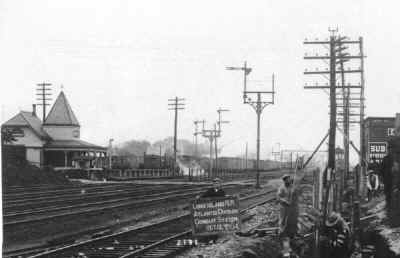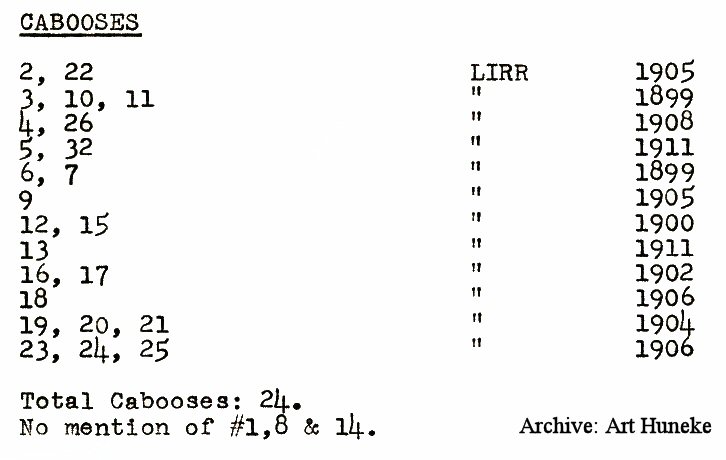 LIRR Caboose list ICC Report 1916 |
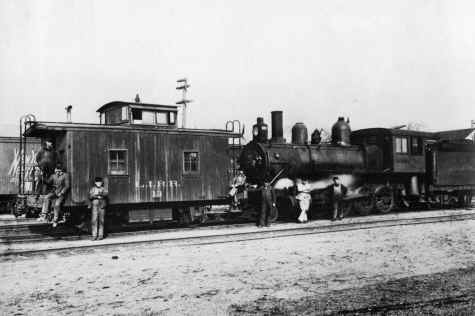 LIRR #13 Speonk bound freight Patchogue Team Yard 1915 Archive: Ron Ziel |
|||||||||||||||||||||||||||||||||||||||||||||||||||||||||||||||||||||||||||
|
Prior to the
arrival of the N52 types, there had been a total of 24 little four wheeled
"hacks" that looked a lot like the old ND cabins on the "Penn."
Some of these still remained in service up until the end of 1927;
this accounts for the missing numbers 13, 17, 26, and 32 that were never
assigned among the N52ís numbered 10 through 48. Numbers 13, 26, and 32
were built as late as 1911 and were among the five of them that actually
remained until 1927. The other two had the numbers 4 and 5, which were not
going to be reassigned anyway. Four-wheeler No. 17 went out in 1925,
almost coincident with the delivery of the batch of new "hacks"
that would ordinarily have included that number. Number 17 was never
reassigned either. By the early
1900s, the Pennsylvania Railroad and its subsidiary Long Island RR were
still using all-wood, four-wheeled caboose cars, but all of this would
soon start to change when the PRR built the first such car with a steel
underframe as early as 1903, even long before such a "safety"
feature would be mandated by law. Those first steel underframe cars were
known as class ND and some of these became 'precursors of the eight-wheel
type when they underwent conversions that would have two separate trucks
instead of the straight four-wheel configuration. Trains were
getting heavier and longer, while locomotives were becoming larger and
more powerful and the caboose had to do more than just "keep up"
with the end of the train, as it was often being subjected to terrific
forces when sandwiched between the train and a helper engine pushing
behind ft at the rear. Many of the four-wheelers were still
relatively new, having, been built as late as 1905. PRR shops throughout
lines west of Pittsburgh dealt with the problem by salvaging the bodies of usable four-wheelers and
rebuilding them into "stretch" versions that would be placed on
top of eight-wheel steel underframes that had been prepared for them.
These would become the very well known ND types. In 1914, PRR shops at Altoona
built 'the world's first all steel eight-wheel caboose which would become
class N5. Replacement of the four-wheelers on the LIRR began in 1916 with the construction of numbers 33 thru 35 which were steel underframe, eight-wheel cars patterned after the N5 in dimensions and layout except that they were of "composite" construction (having an iron-reinforced wooden superstructure) and were designated as sub-class "N52." Three more of these (numbers 36 thru 38) were built the following year. These six were all built in the LIRR's own shops. Thus started the gradual disappearance of the old four-wheelers, the last of which was not taken out of service until ten years later. Excerpt: HISTORY OF THE LONG ISLAND RAIL ROAD CLASS N52 CABIN CARS by Bob Kaelin |
||||||||||||||||||||||||||||||||||||||||||||||||||||||||||||||||||||||||||||
|
Chronological Build Year Caboose No.:
|
||||||||||||||||||||||||||||||||||||||||||||||||||||||||||||||||||||||||||||
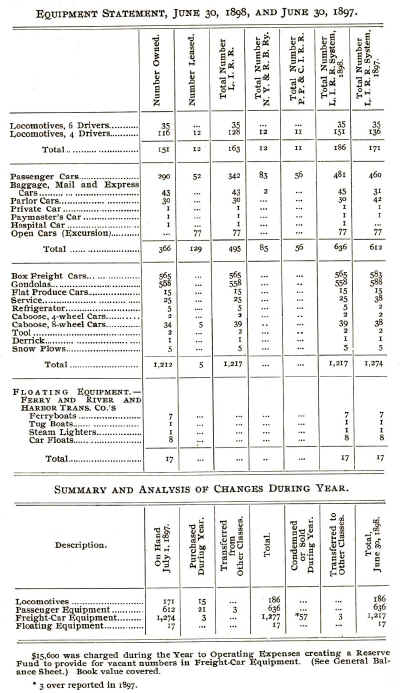 LIRR Annual Report 6/30/1898, and 06/30/1897 Thirty-four 8-wheel [2 truck] including 5 leased and two 4-wheel bobbers in 1898; with an overall addition of one Hack between 1897 and 1898. Archive: Art Huneke |
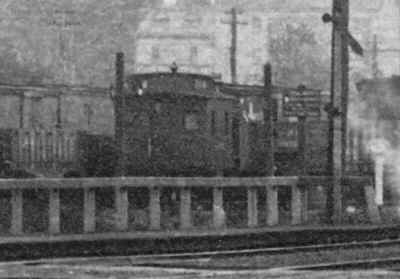 LIRR Bobber Hack 10/13/1904 Archive: Art Huneke
Dunton station on the Atlantic branch. Grade crossing in photo is Van Wyck Avenue. View is looking east. "AC" tower (Jamaica Cross Switches) is at right visible between the telegraph poles. The yard visible is the west end of the old Jamaica storage yard, prior to the 1913 grade elimination. Morris Park shops would be behind
the photographer a little ways. |
|||||||||||||||||||||||||||||||||||||||||||||||||||||||||||||||||||||||||||
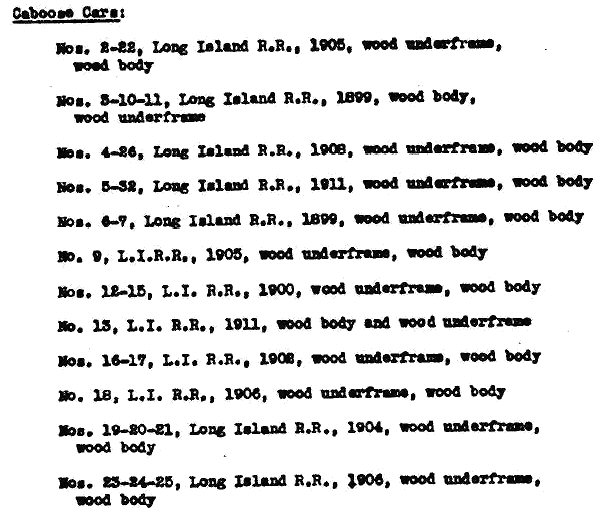 Page
19 LIRR Caboose Cars (Bobber Hacks) Build dates listing from:
Page
19 LIRR Caboose Cars (Bobber Hacks) Build dates listing from: 